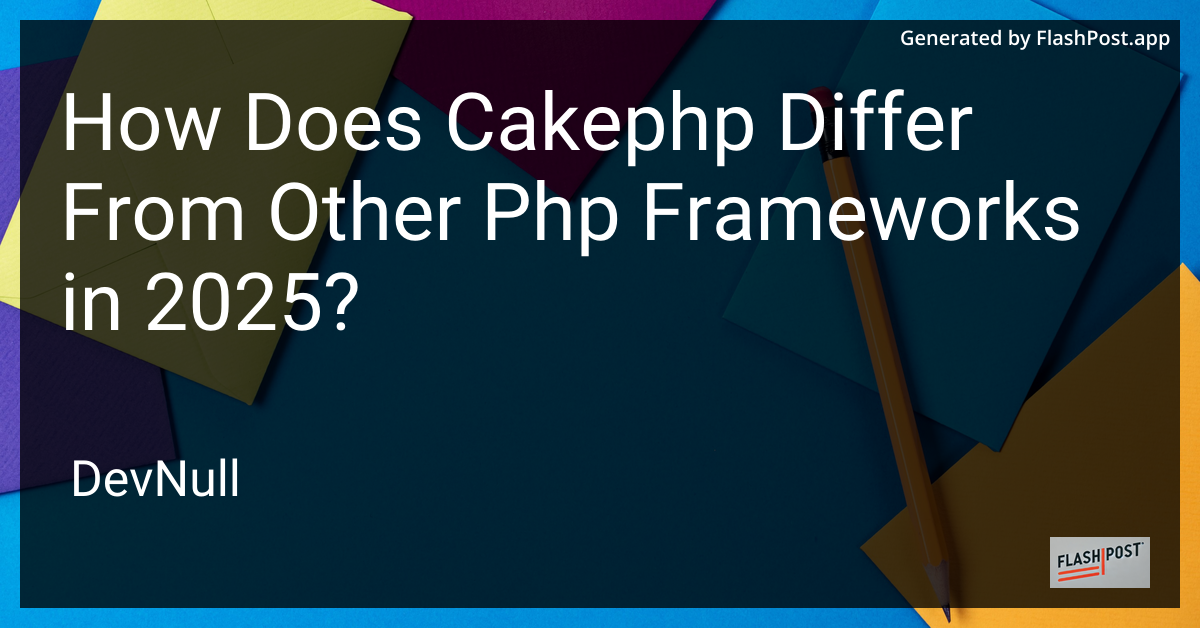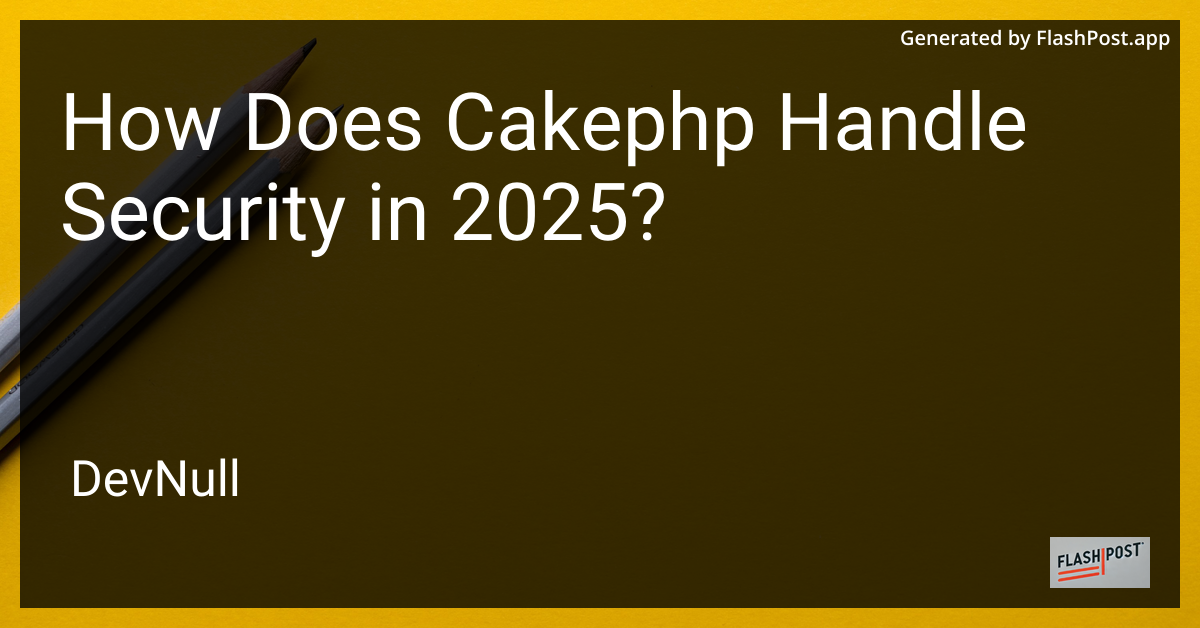

How Does Cakephp Handle Security in 2025?
In the ever-evolving world of web development, security remains a top priority for developers and organizations alike. By 2025, CakePHP, a popular PHP framework, continues to lead the charge in providing robust security features that enable developers to build secure and reliable applications. Let’s explore how CakePHP handles security in 2025.
Key Security Features of CakePHP
As the threats to web applications grow, CakePHP has continuously advanced its core security features to safeguard applications against vulnerabilities. Here are some of the pivotal security features CakePHP offers:
1. Data Validation and Sanitization
CakePHP incorporates a comprehensive validation layer, ensuring that all incoming data is filtered and sanitized effectively. This prevents malicious data from entering the application and causing harm. By employing advanced validation rules that are easy to implement, developers can ensure data integrity.
2. Cross-Site Request Forgery (CSRF) Protection
CSRF attacks can be mitigated using CakePHP’s built-in CSRF protection. The framework generates authentic tokens for each user session, which are verified with every form submission. This mechanism ensures that requests initiated by unauthorized parties are rejected.
3. Cross-Site Scripting (XSS) Prevention
Leveraging automatic escaping and context-sensitive output encoding, CakePHP thwarts XSS attacks. By default, it encodes dynamic output to remove any executable scripts, safeguarding user data and preserving the application’s integrity.
4. SQL Injection Defense
CakePHP’s ORM layer provides a robust defense against SQL injection attacks. Utilizing parameterized queries, developers can confidently execute database operations without exposing their applications to injection vulnerabilities.
5. Secure Password Handling
In 2025, CakePHP continues to use advanced password hashing algorithms like bcrypt to securely store user passwords. This ensures that even if the database is compromised, user credentials remain protected against brute-force attacks.
6. Content Security Policy (CSP) Support
CakePHP facilitates the implementation of CSPs, allowing developers to define precisely which resources can be loaded by the client’s browser. This prevents various attacks, such as data injection, by restricting resource loading.
Additional Resources for Enhancing Security in CakePHP
To utilize CakePHP to its fullest potential, developers can explore additional resources and tutorials:
- Learn more about customizing views to improve your application’s security: CakePHP View Customization.
- Understand why CakePHP is a preferred choice among developers: Why Choose CakePHP Framework.
- Discover techniques for handling images securely in your application: CakePHP Image Rendering.
Conclusion
By 2025, CakePHP remains at the forefront of secure web development, offering an evolving suite of security features that are vital for protecting modern web applications. As threats become more sophisticated, CakePHP’s commitment to security ensures that developers can create applications that are resilient and secure. Leveraging CakePHP’s robust features and staying informed about best practices is crucial for any developer looking to maintain a secure web presence.
By embracing CakePHP’s security framework, developers can focus more on building innovative features while trusting in the platform’s ability to handle crucial security concerns.
This article is structured to address the current and forward-looking state of security features in CakePHP, accompanied by relevant links to additional resources for developers interested in further enriching their understanding and usage of CakePHP.